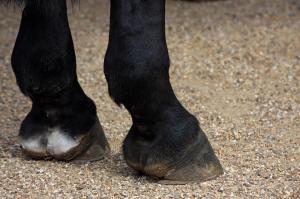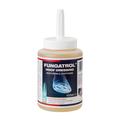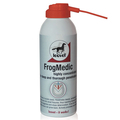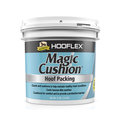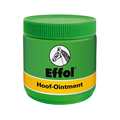Good blood circulation is essential for keeping your horse's hooves healthy and functioning properly. Without proper circulation, your horse can develop problems with their hooves. These include lameness, cracks, and even founder. Read how to improve circulation in hooves to keep them healthy and strong.
Basic Hoof Anatomy
The hoof is a complex structure that is constantly growing and changing. The hoof wall, sole, frog, bars, and heel are all made of keratin. It's the same protein that makes up hair and nails. The blood vessels in the hooves are responsible for bringing nutrients to the hoof tissues and removing waste products.
There are three main types of blood vessels in the horse's hooves:
- Arteries - carry oxygenated blood from the horse’s heart to the rest of the body;
- Veins - carry deoxygenated blood back to the horse’s heart;
- Capillaries - connect arteries and veins and allow for an exchange of nutrients and wastes between them.
The arteries in horses' hooves start at the coronary band. They branch out into smaller and smaller vessels until they reach capillaries. These are extremely tiny blood vessels. The veins carry deoxygenated blood back to the heart through larger vessels called vena cavaes (or "big veins"). These large veins collect blood from all over your horse's body before sending it on its way again towards his heart.
Why Proper Blood Flow in Hooves is Important for Horses?
Proper blood flow promotes healthy living and prolonged longevity. Horse hooves need a special kind of supply and drainage system to keep the feet healthy. This is because a horse walks on hard surfaces that can damage his hoof tissues if he has poor circulation.
The structure of the blood vessels allows for nutrients and oxygen to reach areas where he might develop an infection or injury. As well as flush out toxins like lactic acid. This may cause soreness during exercise.
A lack of normal circulation can lead to inflammation at those sites which slow healing time significantly. While increasing risk factors associated with developing ulcers. This is a common problem among racehorses who often run around open tracks without any shoes underneath their hooves. That’s why it makes sense to consider light horse shoes that protect the limbs and keep the speed.
Horses need proper circulation through their feet just like humans do. This promotes healing processes and other vital functions to happen efficiently. It’s important both before any injury occurs. Because prevention goes much further than trying to fix something after it has already happened.
How to Improve Blood Circulation in Hooves?
Boost blood flow by providing your horse with quality farrier care on a regular basis. Trimming and shoeing will help reduce pressure points within the coronet band. This improves circulation as well as relieves pain associated with poor or restricted blood flow through affected areas. In addition to improving overall hoof health, including stimulating new growth, increasing circulation, and relieving pain.
There are trimming designs that are specially designed to promote good circulation in the hoof. These designs, such as the heart-bar shoe, can be very helpful in keeping your horse's hooves healthy.
It is important to keep your horse's hooves clean and dry to ensure good circulation. When cleaning, it is important to remove all dirt and debris from under the frog and around the coronet band. Be sure not to over-trim or clip away too much sole. This will decrease blood flow to the hoof.
Biotin is another way to naturally improve blood flow throughout the hoof wall by nourishing the keratin cells that make up the entire structure of the hoof. In addition to improving overall hoof health, including stimulating new growth, increasing circulation, and relieving pain. Biotin also helps strengthen hair follicles. This can often become brittle or weak due to poor nutrition in horses with Cushing's disease (PPID).
Another way to increase circulation in horse hooves is with a massage. This increases blood flow to the hooves and can help repair damaged tissue from injuries such as sole bruising or abscesses.
Horse Shoes and Blood Circulation
There are specific horseshoes designed to help horses with lameness caused by poor circulation in their hooves. These shoes prevent a horse from overreaching. They can reduce the amount of pressure the animal puts on his feet when he lands after jumping or galloping.
They are also used to treat horses with navicular disease. Since they have an effect similar to shock-absorbing pads. This protects sensitive tissues while improving circulation. Such shoes promote healing due to better blood flow through these areas.
If you notice any signs that your horse needs additional care for its hooves, it may be time to take action before more serious problems arise down the road.
Conclusion
Caring for horse hooves is a crucial part of any horse owner’s job. If you want to keep your horse in peak physical condition, he needs regular hoof care and routine checkups with your vet or farrier.
Proper blood circulation is key for the health of your horse’s hooves. You can help improve circulation through proper diet and exercise. As well as by taking other measures such as investing in special shoes. They protect sensitive areas from shock and impact. While promoting better healing due to improved blood flow through these areas.
Written by: Horsezz (Guest Author)
